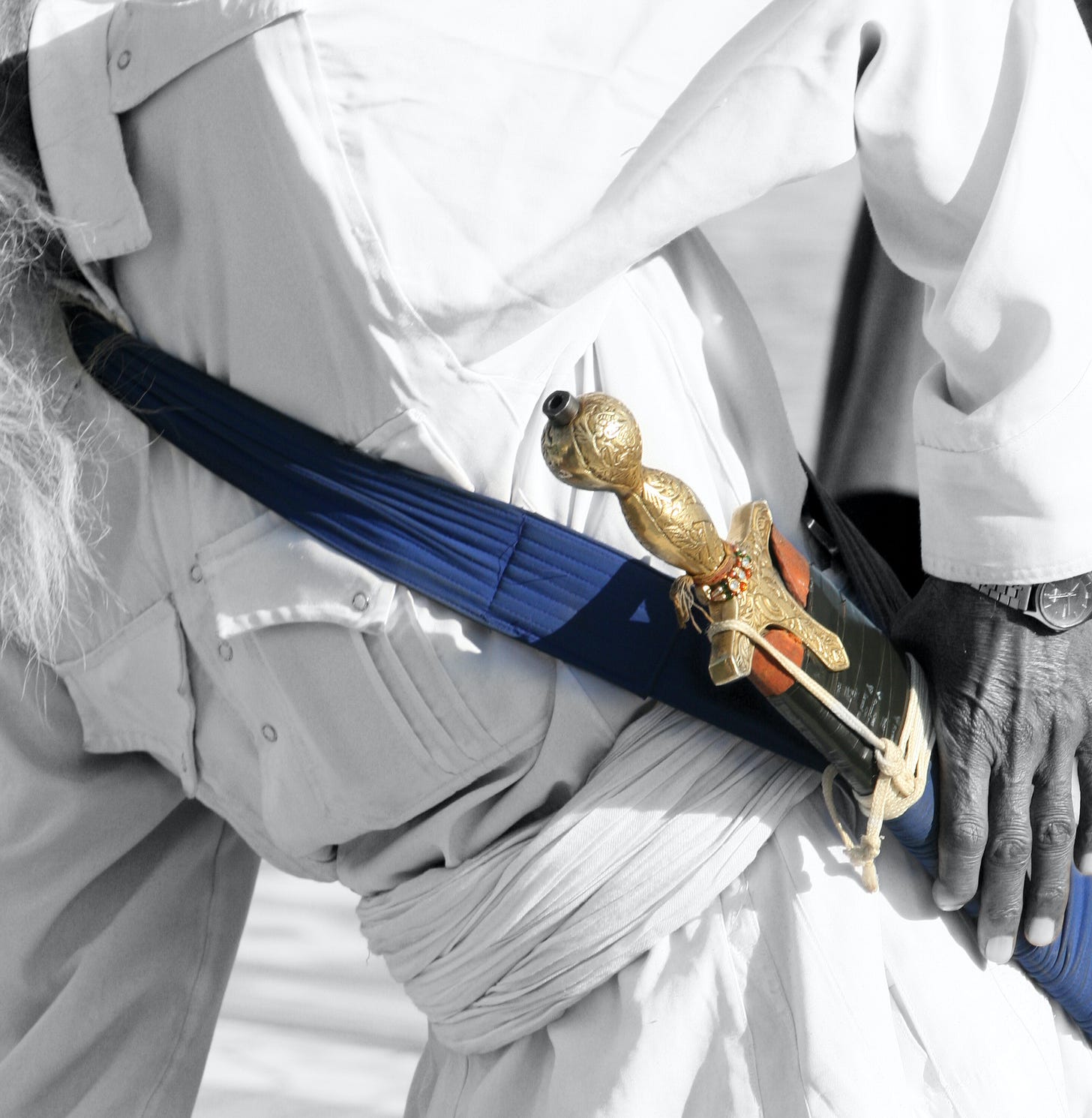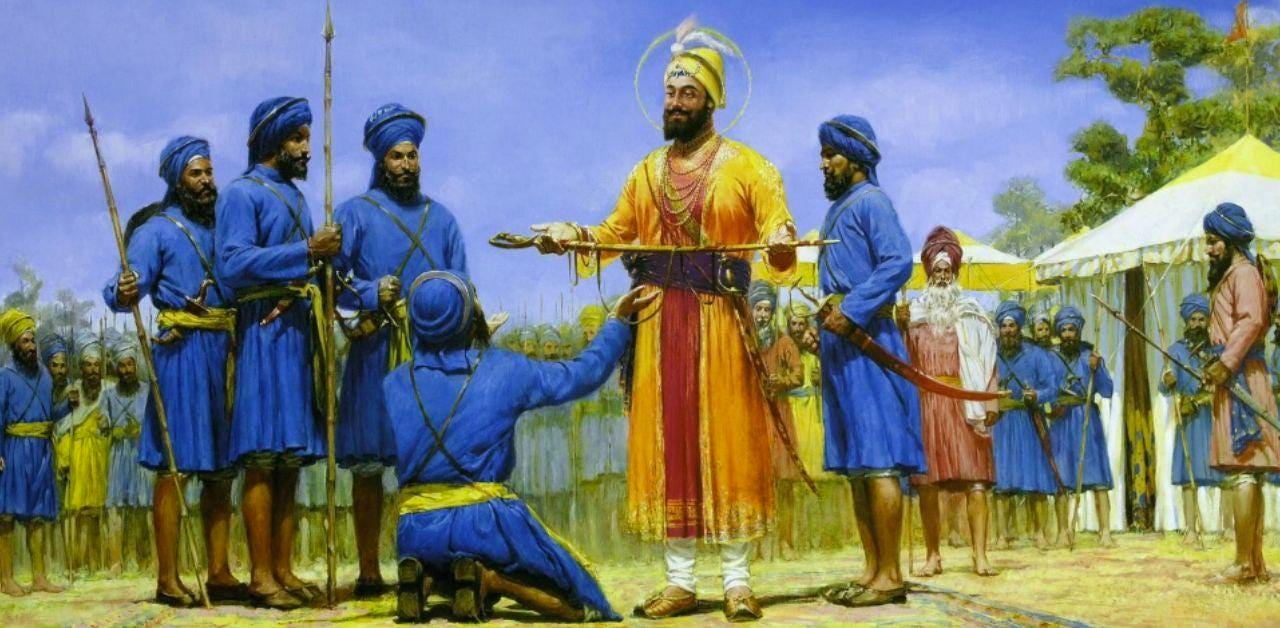People arguing over the relevance of the Sikh Kirpan in today's day and age are not only ignorant about the concept of Sikhi, but also averse to the thought of our Gurus. While this little article of faith as part of the 5K for the dedicated Sikh (spelled Khalsa) may be of no match to the modern weapons of today, it still remains what it was intended for - defence of self, or of another, in times of danger to life.
When Guru Gobind Singh created the Khalsa and made the Kirpan as one of the 5 articles of the faith of his Sikh, he knew very well why he chose it over other weapons like guns, which were there even during his times of battle with the tyrant Mughals.
Guns need ammunition and run out. They can backfire, and they come in all shapes and sizes. They are also prone to becoming obsolete. Other weapons like bows and arrows also had their own flaws in comparison to the Kirpan.
The Kirpan of today is a far cry to the original one that Guru Gobind Singh created and recommended for his Khalsa. Over the centuries, various powers that came to rule over the Sikhs (especially the British) slashed the power of the Sikhs by imposing restrictions on the size of the Kirpan, because they knew very well who the greatest threat would come from in their rule over India.
Punjab – the very land of the Sikh Empire – that took over 200 years for the British to overpower and colonise after they had already subjugated the rest of the Indian subcontinent, was solid proof that it could take a matter of just half a decade at most for the Sikhs to win back their land and for the rest of India. So they had to limit their physical prowess by weakening the defence of the ordinary Sikh, especially when even a handful could overpower an enemy of thousands at a time, as proven through history.
So what really makes the Kirpan still relevant today, regardless of its size and relative 'harmlessness' before weapons of 'greater' calibre? The reason is – simplicity.
The Kirpan is the most basic weapon of defence that can be used when all else fails to protect the life of self or of another. It needs no reloading, it doesn't splinter, nor backfire. It's timeless, it's not subject to becoming obsolete. It is so basic, a Khalsa hardly even feels it as part of their uniform as it is just right in size and unobstructive concept. It is worn within easy reach and doesn't need to be prepared.
The 5Ks - Kirpan, Kanga, Kaccherra, Kara and Kes (or Keski) are all so basic, that it beats reason why people still cannot understand them in the age of 'intellectualism'. It's all about understanding the message of the Guru and not to question his thinking.
Sikhi is simply the 'game of love' for trusting and following what the Guru designed for us in the package of Sikhi that was put together carefully over 240 years. It's the collective work and sacrifice of 10 masters who shared the same spirit and ideal of Sikhi that gave Khalsa the form that it has today, and will remain, so long as there is life on this earth.
The Kirpan of the Sikh, originally upto 3 feet long, has now, only less than a century, come down to hands length. Then there are those that wear even more smaller ones, hanging across a string, some even wearing them as a necklace.
When we cannot wear the kakaars confidently and as originally intended by the Guru, then it beats the purpose for which we were commanded to wear them. There should be no shame or fear of what the world will say or react to the royal image of the Guru, for it is not our responsibility to pacify their ignorance by compromising our identity.
Wear the proper kirpan, complete with a real, strong gatra and look the soldier of Guru Gobind Singh, and not like a timid and fickle version of one that cannot even slice an apple, let alone use it in defense of self or of another.
Sikhi goes along, no matter wherever you go. No excuses. No exceptions.
(Kirpan temporary wrapped around higher to prevent it from getting wet).








